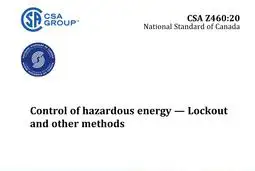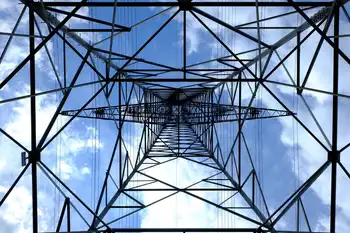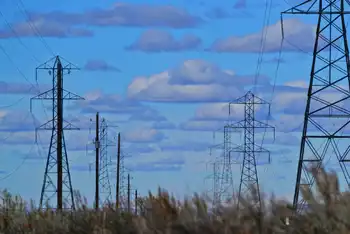Long outages pose risk to U.S. reactors
By Honolulu Star-Advertiser
NFPA 70b Training - Electrical Maintenance
Our customized live online or in‑person group training can be delivered to your staff at your location.

- Live Online
- 12 hours Instructor-led
- Group Training Available
Even so, they have only required the nation's 104 nuclear reactors to develop plans for dealing with much shorter blackouts on the assumption that power would be restored quickly.
In one nightmare simulation presented by the Nuclear Regulatory Commission in 2009, it would take less than a day for radiation to escape from a reactor at a Pennsylvania nuclear power plant after an earthquake, flood or fire knocked out all electrical power and there was no way to keep the reactors cool after backup battery power ran out. That plant, the Peach Bottom Atomic Power Station outside Lancaster, has reactors of the same older make and model as those releasing radiation at Japan's Fukushima Daiichi plant, which is using other means to try to cool the reactors.
And like Fukushima Daiichi, the Peach Bottom plant has enough battery power on site to power emergency cooling systems for eight hours. In Japan, that wasn't enough time for power to be restored. According to the International Atomic Energy Agency and the Nuclear Energy Institute trade association, three of the six reactors at the plant still can't get power to operate the emergency cooling systems. Two were shut down at the time. In the sixth, the fuel was removed completely and put in the spent fuel pool when it was shut down for maintenance at the time of the disaster. A week after the March 11 earthquake, diesel generators started supplying power to two other two reactors, Units 5 and 6, the groups said.
The risk of a blackout leading to core damage, while extremely remote, exists at all U.S. nuclear power plants, and some are more susceptible than others, according to an Associated Press investigation. While regulators say they have confidence that measures adopted in the U.S. will prevent or significantly delay a core from melting and threatening a radioactive release, the events in Japan raise questions about whether U.S. power plants are as prepared as they could and should be.
A top Nuclear Regulatory Commission official said that the agency will review station blackouts and whether the nation's 104 nuclear reactors are capable of coping with them.
As part of a review requested by President Barack Obama in the wake of the Japan crisis, the NRC will examine "what conditions and capabilities exist at all 104 reactors to see if we need to strengthen the regulatory requirement," said Bill Borchardt, the agency's executive director for operations.
Borchardt said an obvious question that should be answered is whether nuclear plants need enhanced battery supplies, or ones that can last longer.
"There is a robust capability that exists already, but given what happened in Japan there's obviously a question that presents itself: Do we need to make it even more robust," he said at a hearing before the Senate Energy and Natural Resources Committee.
"We didn't address a tsunami and an earthquake, but clearly we have known for some time that one of the weak links that makes accidents a little more likely is losing power," said Alan Kolaczkowski, a retired nuclear engineer who worked on a federal risk analysis of Peach Bottom released in 1990 and is familiar with the updated risk analysis.
Risk analyses conducted by the plants in 1991-94 and published by the commission in 2003 show that the chances of such an event striking a U.S. power plant are remote, even at the plant where the risk is the highest, the Beaver Valley Power Station in Pennsylvania.
These long odds are among the reasons why the United States since the late 1980s has only required nuclear power plants to cope with blackouts for four or eight hours. That's about how much time batteries would last. After that, it is assumed that power would be restored. And so far, that's been the case.
Equipment put in place after the Sept. 11, 2001 terrorist attacks could buy more time. Otherwise, the reactor's radioactive core could begin to melt unless alternative cooling methods were employed. In Japan, the utility has tried using portable generators and dumped tons of seawater, among other things, on the reactors in an attempt to keep them cool.
A 2003 federal analysis looking at how to estimate the risk of containment failure said that should power be knocked out by an earthquake or tornado it "would be unlikely that power will be recovered in the time frame to prevent core meltdown."
In Japan, it was a one-two punch: first the earthquake, then the tsunami.
Tokyo Electric Power Co., the operator of the crippled plant, found other ways to cool the reactor core and so far avert a full-scale meltdown without electricity.
"Clearly the coping duration is an issue on the table now," said Biff Bradley, director of risk assessment for the Nuclear Energy Institute. "The industry and the Nuclear Regulatory Commission will have to go back in light of what we just observed and rethink station blackout duration."
David Lochbaum, a former plant engineer and nuclear safety director at the advocacy group Union of Concerned Scientists, put it another way: "Japan shows what happens when you play beat-the-clock and lose."
At a recent Senate committee hearing, he said the government and the nuclear power industry have to do more to cope with prolonged blackouts, such as having temporary generators on site — or at nearby military bases — that can recharge batteries.
A complete loss of electrical power, generally speaking, poses a major problem for a nuclear power plant because the reactor core must be kept cool, and back-up cooling systems — mostly pumps that replenish the core with water— require massive amounts of power to work.
Without the electrical grid, or diesel generators, batteries can be used for a time, but they will not last long with the power demands. And when the batteries die, the systems that control and monitor the plant can also go dark, making it difficult to ascertain water levels and the condition of the core. Eleven U.S. reactors are designed to cope with a station blackout lasting eight hours, while 93 are designed for four-hour blackouts.
One variable not considered in the NRC risk assessments of severe blackouts was cooling water in spent fuel pools, where rods once used in the reactor are placed. With limited resources, the commission decided to focus its analysis on the reactor fuel, which has the potential to release more radiation.
An analysis of individual plant risks released in 2003 by the NRC shows that for 39 of the 104 nuclear reactors, the risk of core damage from a blackout was greater than 1 in 100,000. At 45 other plants the risk is greater than 1 in 1 million, the threshold NRC is using to determine which severe accidents should be evaluated in its latest analysis.
The Beaver Valley Power Station, Unit 1, in Pennsylvania had the greatest risk of core melt — 6.5 in 100,000, according to the analysis. But that risk may have been reduced in subsequent years as NRC regulations required plants to do more to cope with blackouts. Todd Schneider, a spokesman for FirstEnergy Nuclear Operating Co., which runs Beaver Creek, told the AP that batteries on site would last less than a week.
In 1988, eight years after labeling blackouts "an unresolved safety issue," the NRC required nuclear power plants to improve the reliability of their diesel generators, have more backup generators on site, and better trained personnel to restore power. These steps would allow them to keep the core cool for four to eight hours if they lost all electrical power. By contrast, the newest generation of nuclear power plant, which is still awaiting approval, is capable of lasting 72 hours without taking any action, and a minimum of seven days if water is supplied by other means to cooling pools.
Despite the added safety measures, a 1997 report found that blackouts — the loss of on-site and off-site electrical power — remained "a dominant contributor to the risk of core melt at some plants." The events of Sept. 11, 2001, further solidified that nuclear reactors might have to keep the core cool for a longer period without power. After 9/11, the commission issued regulations requiring that plants have portable power supplies for relief valves, and be able to manually operate an emergency reactor cooling system when batteries go out.
The NRC says these steps, and others, have reduced the risk of core melt from station blackouts from the current fleet of nuclear plants.
For instance, preliminary results of the latest analysis of the risks to the Peach Bottom plant show that any release caused by a blackout there would be far less rapid and would release less radiation than previously thought, even without any actions being taken. With more time, people can be evacuated. The NRC says improved computer models, coupled with up-to-date information about the plant, resulted in the rosier outlook.
"When you simplify, you always err towards the worst possible circumstance," Scott Burnell, a spokesman for the Nuclear Regulatory Commission, said of the earlier studies. The latest work shows that "even in situations where everything is broken and you can't do anything else, these events take a long time to play out," he said. "Even when you get to releasing into environment, much less of it is released than actually thought."
Exelon Corp., the operator of the Peach Bottom plant, referred all detailed questions about its preparedness and the risk analysis back to the NRC. In a news release issued earlier this month, the company, which operates 10 nuclear power plants, said, "all Exelon nuclear plants are able to safely shut down and keep the fuel cooled even without electricity from the grid."
Others, looking at the crisis unfolding in Japan, aren't so sure.
In the worst-case scenario, the NRC's 1990 risk assessment predicted that a core melt at Peach Bottom could begin in one hour if electrical power on- and off-site were lost, the diesel generators — the main back-up source of power for the pumps that keep the core cool with water — failed to work and other mitigating steps weren't taken.
"It is not a question that those things are definitely effective in this kind of scenario," said Richard Denning, a professor of nuclear engineering at Ohio State University, referring to the steps NRC has taken to prevent incidents. Denning had done work as a contractor on severe accident analyses for the NRC since 1975. He retired from Battelle Memorial Institute in 1995.
"They certainly could have made all the difference in this particular case," he said, referring to Japan. "That's assuming you have stored these things in a place that would not have been swept away by tsunami."















